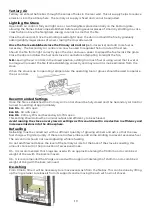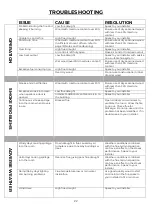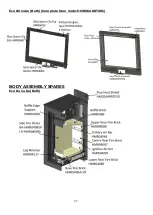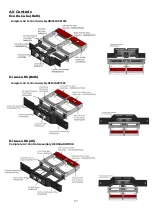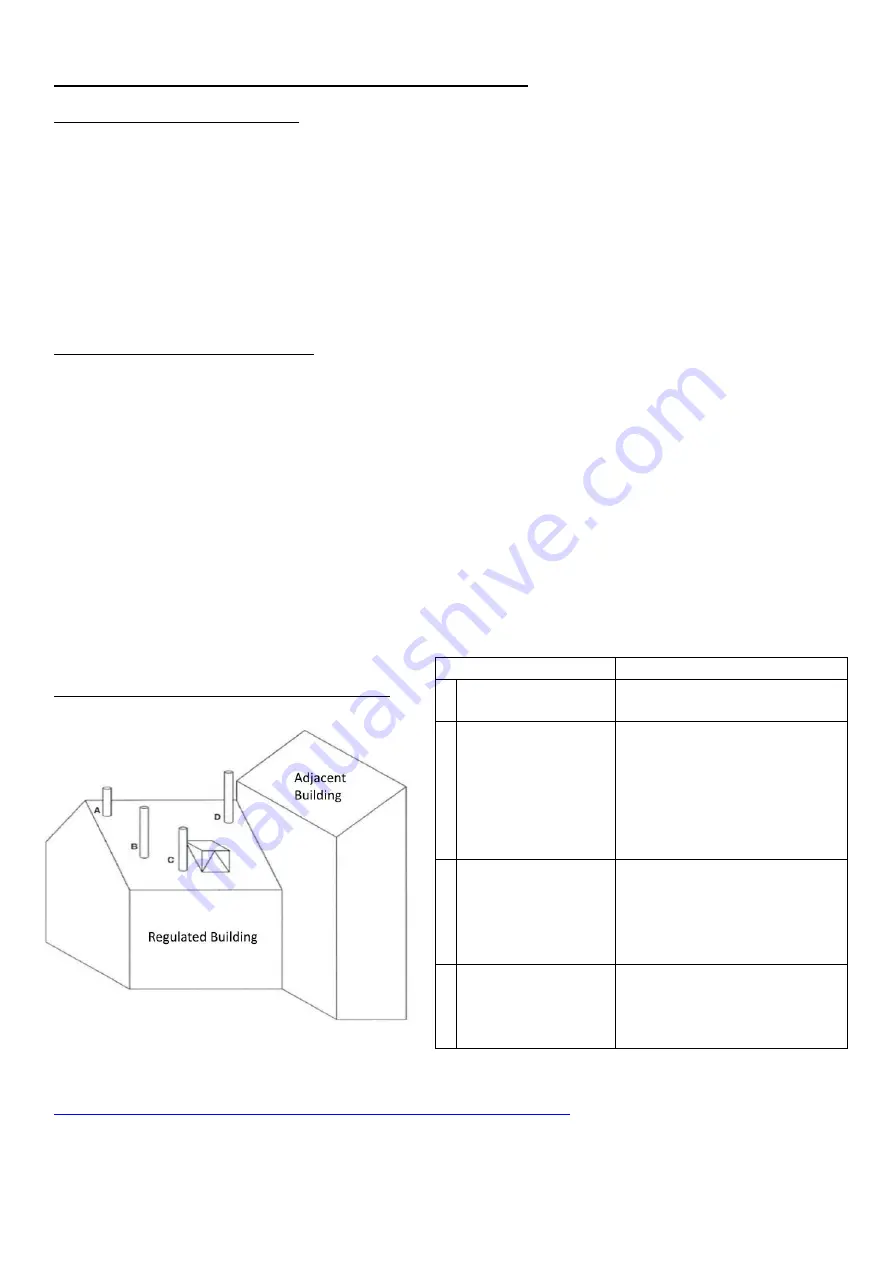
12
Pre-Installation Requirements
P
LEASE CHECK THE FOLLOWING
:
Any existing chimney/flue system must be confirmed as suitable for this appliance as defined in
Building Regulations Document J. It must be swept and inspected, by a competent person (see notes),
to confirm that is structurally sound and free from cracks and obstructions.
The diameter of the Flue should not be less than 127mm and not more than 200mm. Do not connect to
systems that have large voids or spaces. If any of these requirements are not met, the chimney should
be lined by a suitable method.
If the chimney is suspected of previously serving an open fire it must be swept again, within a month of
regular use, to clear any soot that may have been dislodged due to the variation in combustion levels
and higher flue gas temperature levels. The chimney/flue system exit must comply with Building
Regulations Document J. The minimum height and should terminate in accordance with Table 1.
Connection to the Chimney
An existing fireplace opening can be bricked up or sealed with a register plate
.
A short length of flue
pipe of minimum 127mm internal diameter may then be used to connect the stove to the chimney
.
This
flue pipe should be made of 316 grade stainless steel or vitreous enamelled steel, nominal thickness
1.2mm. The length of any horizontal run of flue pipe must not exceed 127mm. It is essential that all
connections between the stove and chimney-flue are sealed and made airtight.
Make provision to access the chimney/flue system for cleaning and the removal of debris. If there is no
existing chimney then either a prefabricated block chimney in accordance with Building Regulations
Approved Document J, or a twin-walled insulated stainless-steel flue to BS4543 can be used. These
chimneys must be fitted in accordance with the manufacturer’s instructions and Building Regulations.
New masonry and flue block chimneys must meet the requirements of Building Regulations Document
J. Any connecting flue pipe systems must also meet these regulations.
Please check the suitability of the fireplace and/or surround for use with this appliance before installing
it. If you have any doubts about the suitability of your chimney, consult your local Dealer/Stockist or
Installation Engineer. Both the chimney and flue pipe must be accessible for cleaning and if ANY part of
the chimney cannot be reached through the stove (with baffle removed), a soot door must be fitted in a
suitable position.
Flue Outlet Positions (Document J):
Table 1.
A full copy of Document J can be found here:
http://www.planningportal.gov.uk/uploads/br/BR_PDF_ADJ_2010.pdf
Position on Roof
Clearances to flue exit
A At or within
600mm of the ridge
At least 600mm
above the ridge
B Elsewhere on a roof
(Pitched or Flat)
At least 2.3 M horizontally from the
nearest point on the weather
surface and:
a) At least 1.0 M above the highest
point of intersection between the
chimney and weather surface; or
b)at least as high as the ridge
C Below (on a pitched
roof) or within 2.3 M
horizontally to an
opening window or
dormer
At least 1.0 M above the top of the
opening
D Within 2.3 M of an
adjoining or adjacent
building, whether or
not beyond the
boundary
At least 600mm above any part of
the adjacent building within 2.3 M



















